Harmonic Analysis is the understanding of the functional sequence of chords. It is the process used to analyze the harmonic structure of a progression, song, or composition. This analysis is then used to make scale selections for improvisation and chord substitution. This lesson covers the Chromatic harmonic principle.
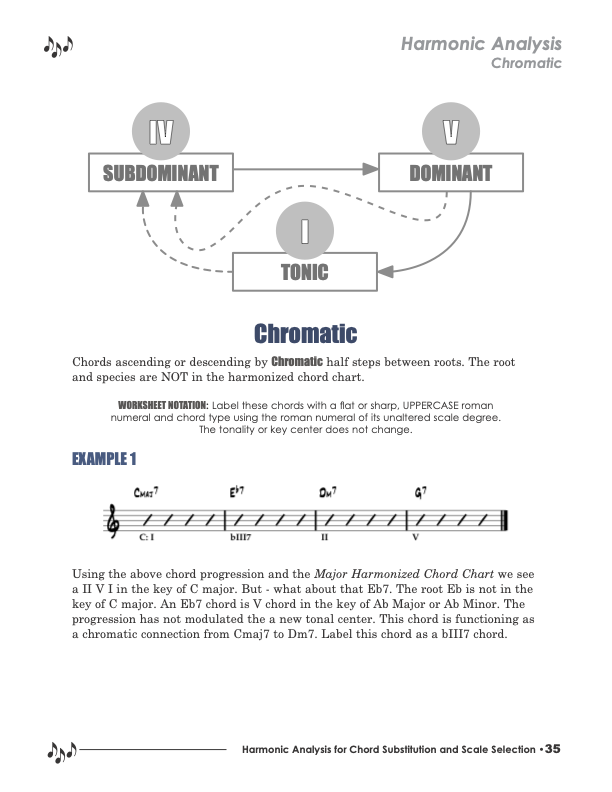
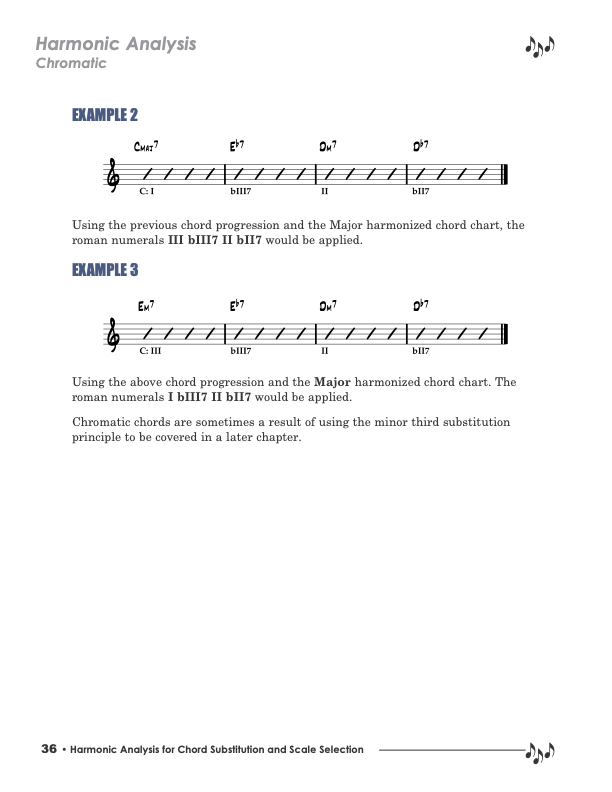
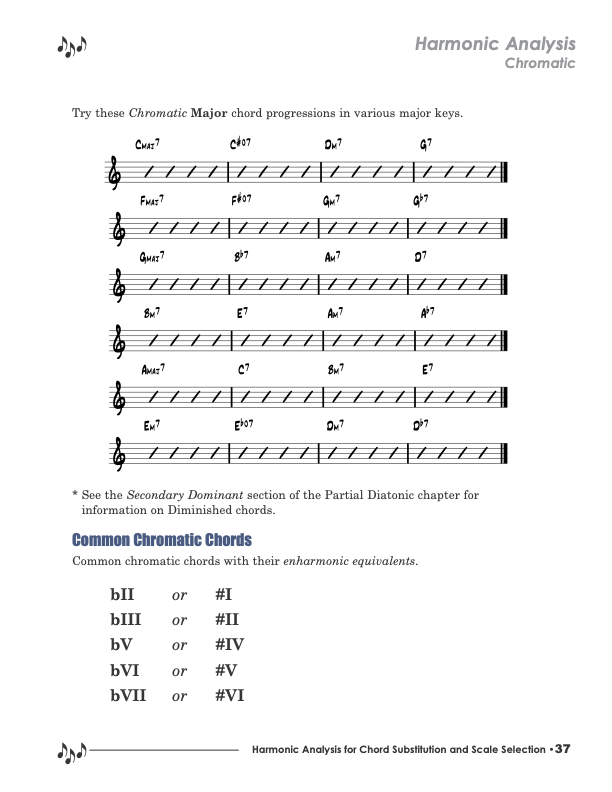
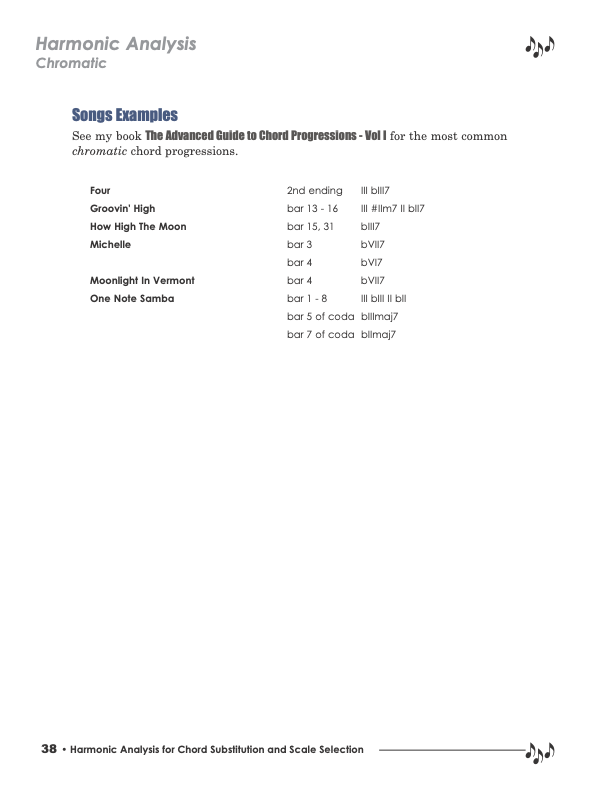




Harmonic Analysis is the understanding of the functional sequence of chords. It is the process used to analyze the harmonic structure of a progression, song or composition. This analysis is then used to make scale selections for improvisation and chord substitution.
This lesson covers the Chromatic harmonic principle.
Available for Premium Site Access Plans Only

This series, is the book Harmonic Analysis for Chord Substitution and Scale Selection by Curt sheller broken out into individual lessons with additional examples and content. Always, the latest version of the book.
Chords ascending or descending by Chromatic half steps between roots. The root and species are NOT in the harmonized chord chart.
WORKSHEET NOTATION: Label these chords with a flat or sharp, UPPERCASE roman numeral, and chord type using the Roman numeral of its unaltered scale degree. The tonality or key center does not change.
Using the above chord progression and the Major Harmonized Chord Chart we see a II V I in the key of C major. But – what about that Eb7. The root Eb is not in the key of C major. An Eb7 chord is V , the dominant chord in the key of Ab Major or Ab Minor . The progression has not modulated the a new tonal center. This chord is functioning as a Chromatic connection from Cmaj7 to Dm7. Label this chord as a bIII7 chord.
Harmonic Analysis is the understanding of the functional sequence of chords. It is the process used to analyze the harmonic structure of a progression, song or composition. This analysis is then used to make scale selections for improvisation and chord substitution.
This lesson covers the Chromatic harmonic principle.
Available for Premium Site Access Plans Only

This series, is the book Harmonic Analysis for Chord Substitution and Scale Selection by Curt sheller broken out into individual lessons with additional examples and content. Always, the latest version of the book.
Chords ascending or descending by Chromatic half steps between roots. The root and species are NOT in the harmonized chord chart.
WORKSHEET NOTATION: Label these chords with a flat or sharp, UPPERCASE roman numeral, and chord type using the Roman numeral of its unaltered scale degree. The tonality or key center does not change.
Using the above chord progression and the Major Harmonized Chord Chart we see a II V I in the key of C major. But – what about that Eb7. The root Eb is not in the key of C major. An Eb7 chord is V , the dominant chord in the key of Ab Major or Ab Minor . The progression has not modulated the a new tonal center. This chord is functioning as a Chromatic connection from Cmaj7 to Dm7. Label this chord as a bIII7 chord.
Harmonic Analysis - Chromatic
Example 2
Using the previous chord progression and the Harmonized Chord Chart(s) , the Roman numerals I bIII7 II bII7 would be applied.
Example 3
Using the previous chord progression and the Harmonized Chord Chart(s) , the Roman numerals III bIII7 II bII7 would be applied.
Chromatic chords are sometimes a result of using the Minor Third Substitution Principle to be covered in a later chapter.
Try these Chromatic Major chord progressions in various major keys.
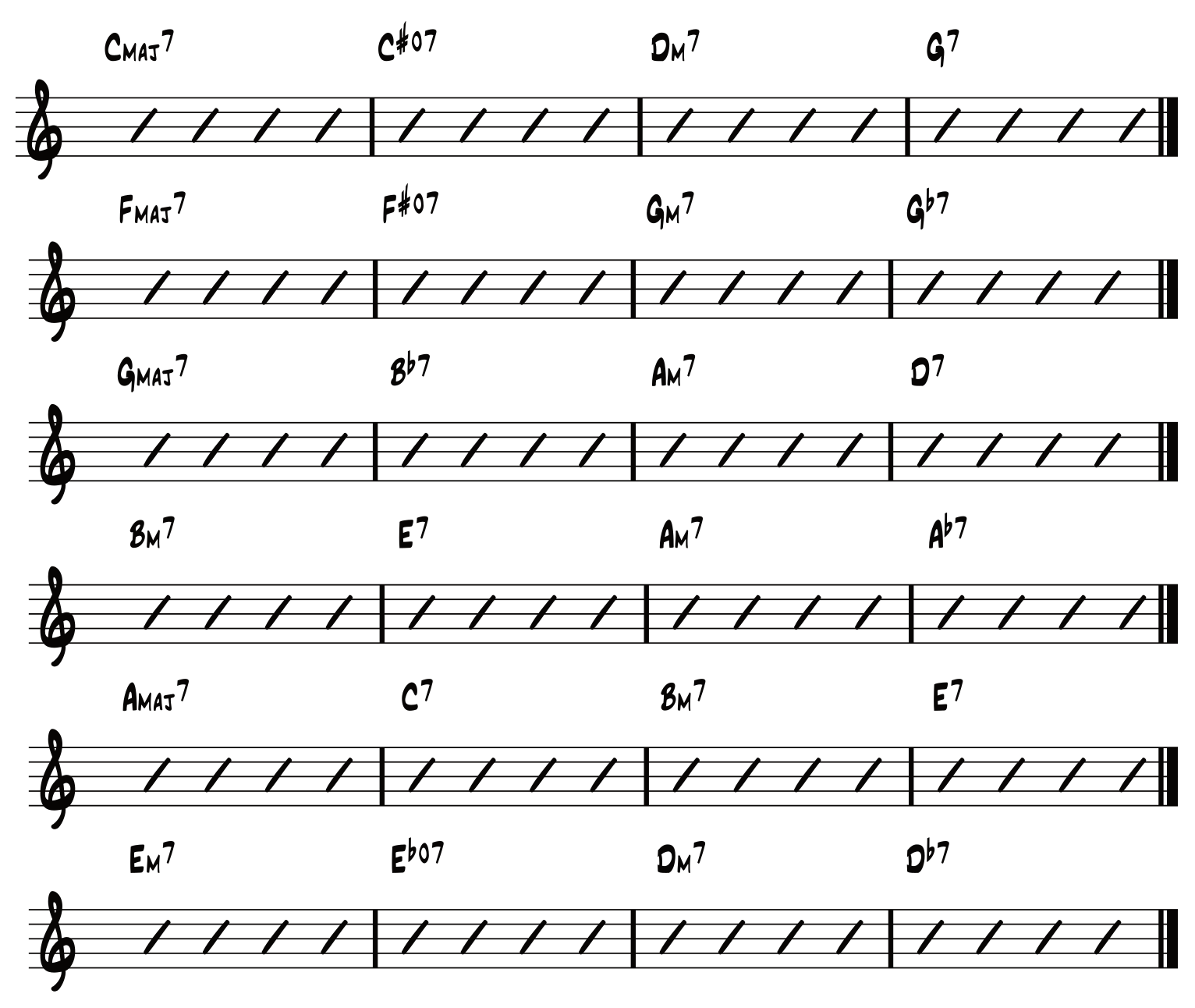
NOTE: See the Secondary Dominant section of the Partial Diatonic chapter for information on Diminished chords.And, why they are not always Diminished chords.
Common Chromatic Chords
Common chromatic chords with their Enharmonic Equivalents .
Song Examples
Most folk, rock and blues songs remain in one key. Most Jazz and Pop standards will modulate to new key centers.
Jazz Classics
Four
2nd ending
III bIII7
Groovin' High
2nd ending
III bIII7
How High The Moon
2nd ending
III bIII7
Michelle
bar 3
bVII7
bar 4
bVI7
Moonlight In Vermont
bar 4
bVII7
Michelle
bar 1 - 8
III bIII II bII
bar 5 of coda
bIIImaj7
bar 7 of coda
bIImaj7
Checkout the Songs section of LearningUkulele.com , as many of the songs examples above are available.
Related Lessons, Videos, Lesson Series, Songs, Books & Reference Charts, Resources & Assets, Workshops are below.
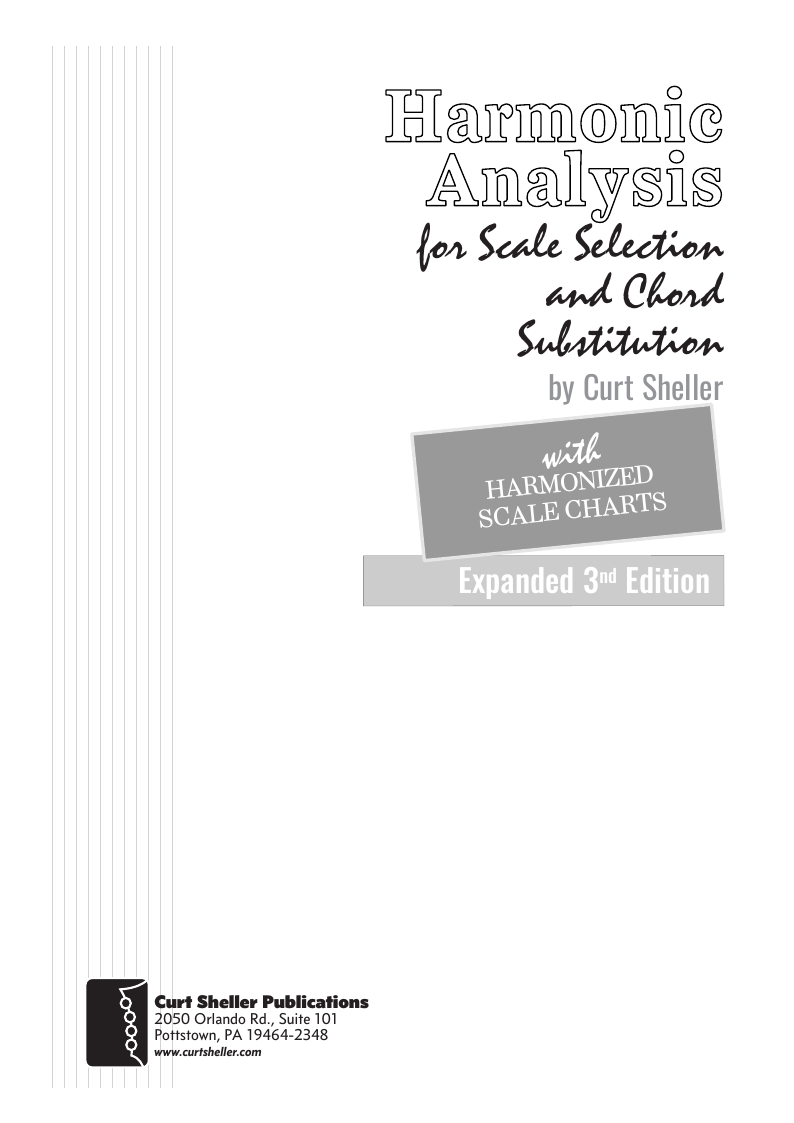
Harmonic Analysis ( HA ) is the process used to determine the harmonic function of chords within a chord progression. A chord progression is defined as a sequence of chords, each chord has a root and has a particular chord type. The relationship of a chord's root to a scale determines its function within that scale's tonality. Once a chord's function is identified, scale selections along with chord and scale substitutions can be made. This process is called Root Movement Analysis ( RMA ). This series of lessons are extracted from my book for use with individual private and on-line students. Each lesson directly corresponds the chapters in my book Harmonic Analysis for Scale Selection and Chord Substitution by Curt Sheller (me).
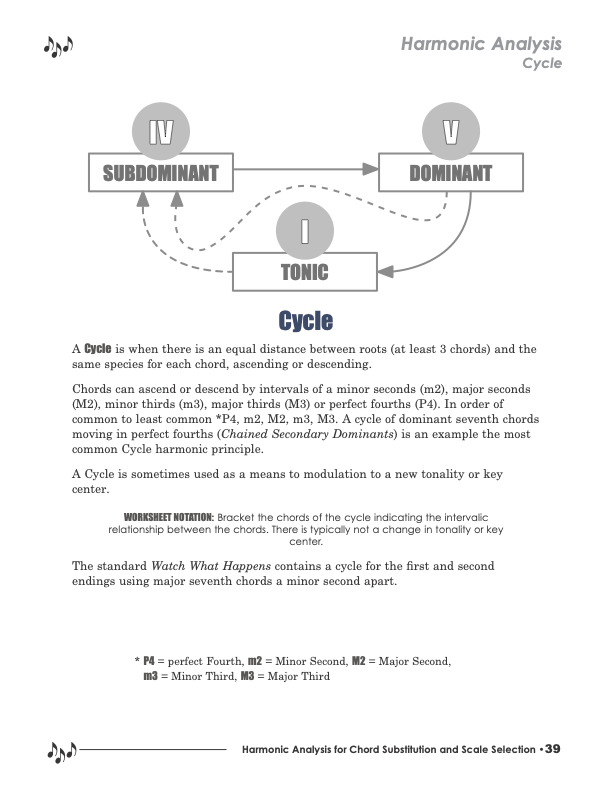
Harmonic Analysis is the understanding of the functional sequence of chords. It is the process used to analyze the harmonic structure of a progression, song, or composition. This analysis is then used to make scale selections for improvisation and chord substitution. This lesson covers the Cycles harmonic principle.

Harmonic Analysis is the understanding of the functional sequence of chords. It is the process used to analyze the harmonic structure of a progression, song or composition. This analysis is then used to make scale selections for improvisation and chord substitution.

Finally, learn the names of the notes of the ukulele fingerboard in C tuning .

Learn the six fingering principles to navigating the ukulele fingerboard. Fingering is one of the most universal topics. Book: Six Secrets of the Ukulele Fingering

Harmonic Analysis is the understanding of the functional sequence of chords. It is the process used to analyze the harmonic structure of a progression, song or composition. Book: Harmonic Analysis for Scale Selection and Chord Substitution

Learn to read single note melodies in the first/open position is a lot easier than you might think. Book: Ukulele – Reading Music Series – Primer

An organized collection of daily practice and reference material for the contemporary ukulele player for developing the vocabulary and knowledge necessary for single note playing. Book: Daily Practice Material for the Contemporary Ukulele
Checkout the Books & Reference Charts for additional Handy, Dandy Reference Charts.

Ukulele Fingerboard Chart for C Tuning, Low or High G – G C E A

Ukulele Fingerboard Chart for G Tuning, Low or High A – D G B E

A handy reference chart of all 15 major and relative minor key signatures. US Letter 8.5 x 11 sized (ANSI-A), A4
Checkout the Books & Reference Charts for additional Handy, Dandy Reference Charts.



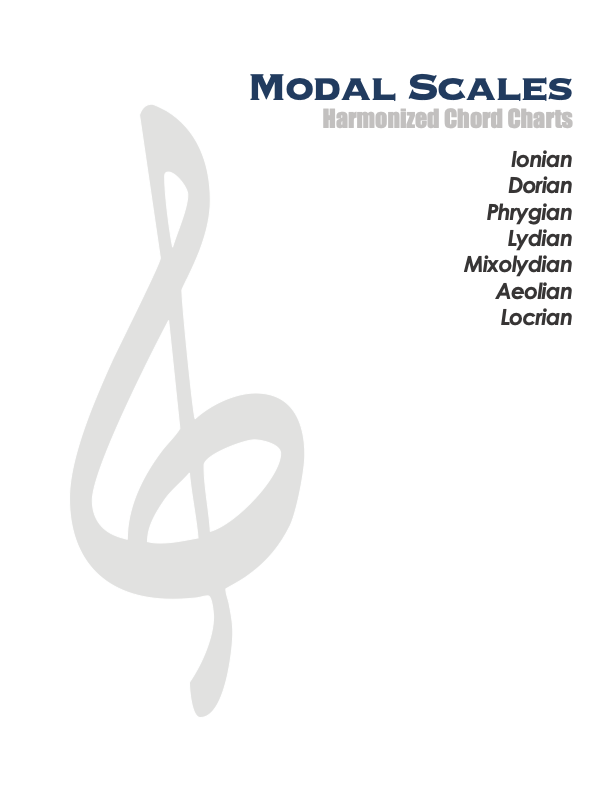
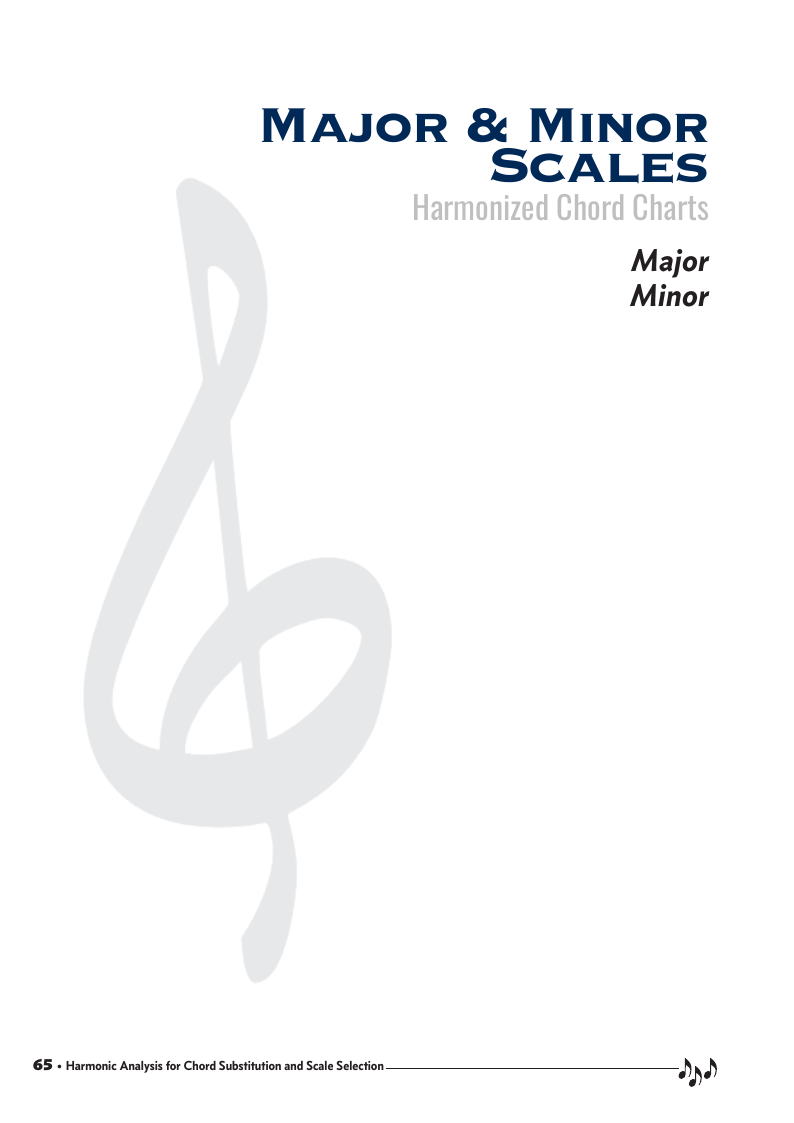
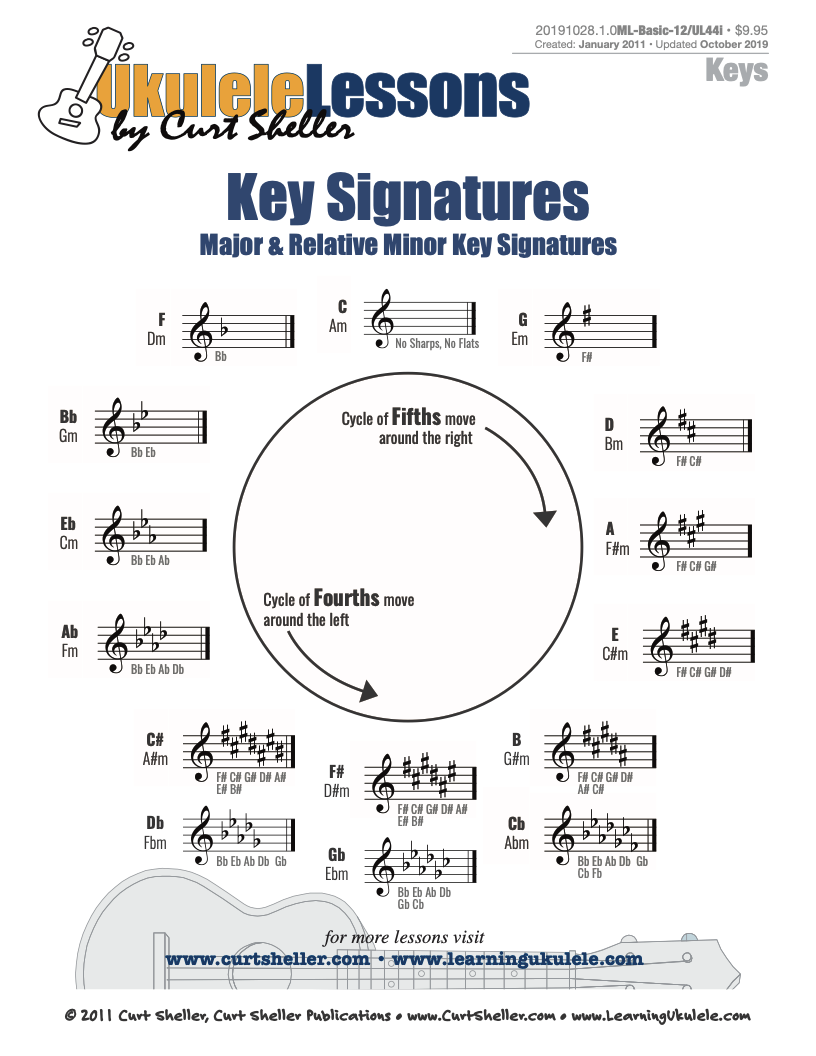
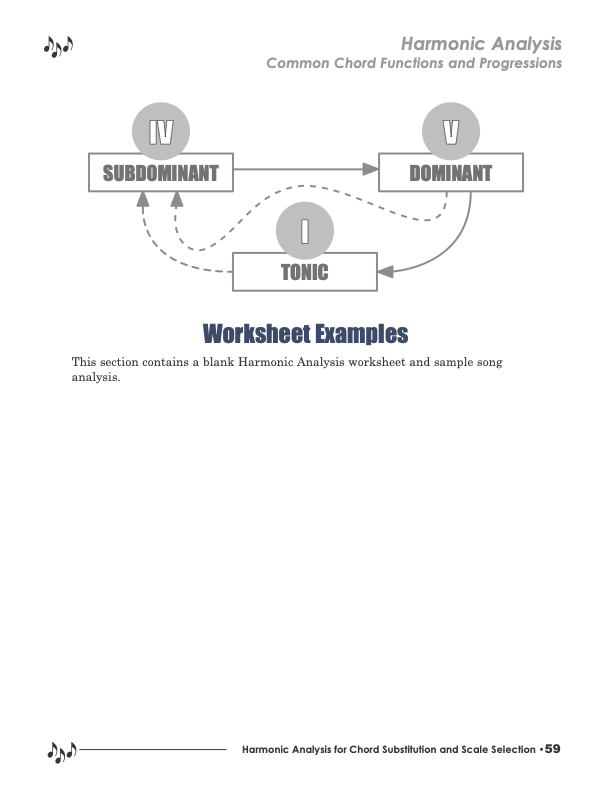
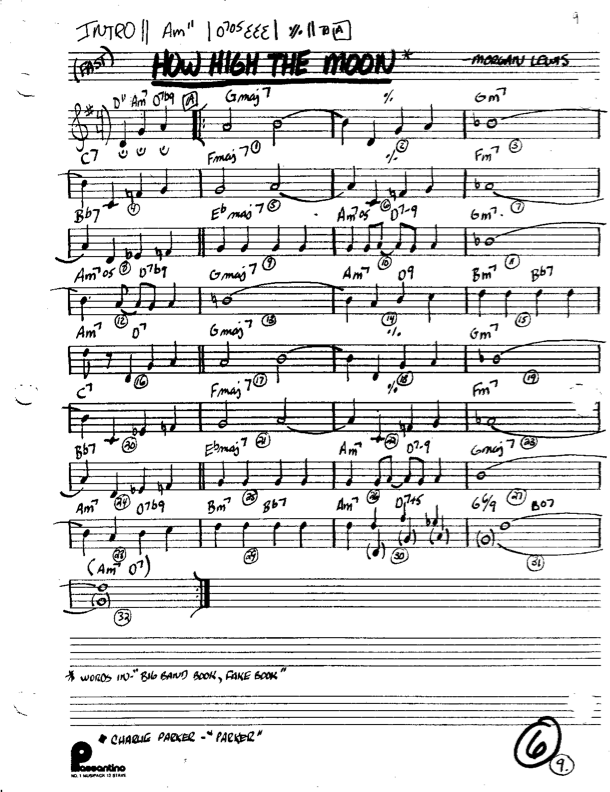

.jpg)